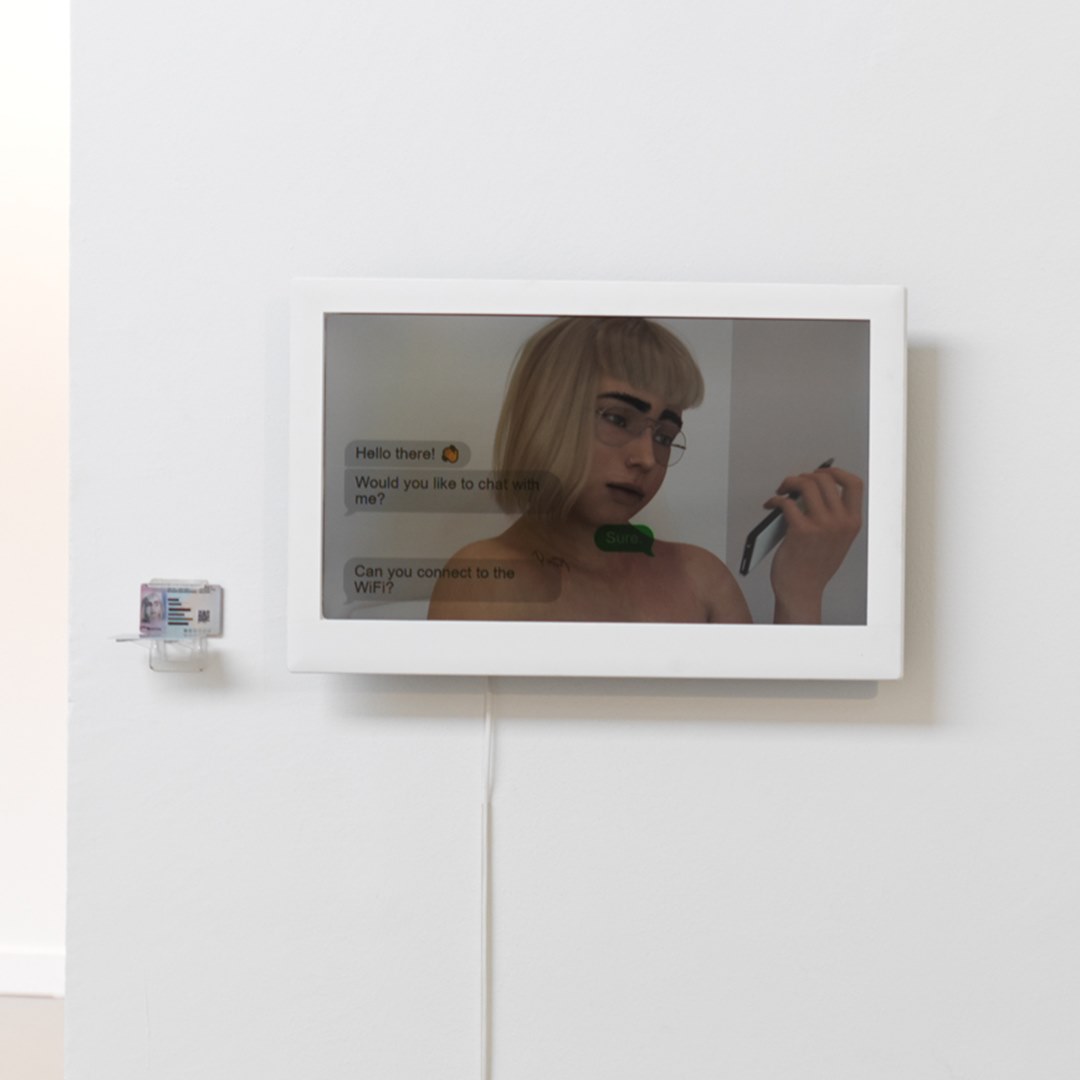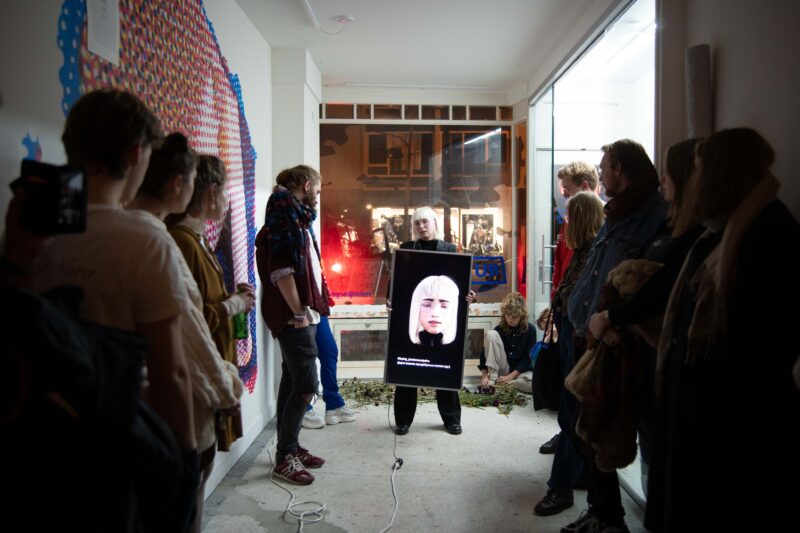 Agenda
Artikelen
Programma
Agenda
Artikelen
Programma

Voor Lise,
At least once a day, I get a notice of a new live stream on Instagram. Artists, bloggers, vloggers and yoga instructors streaming their content live, and I am not ready for it. It is not that I don’t try to connect. Sitting on the couch, still in pyjamas at 4 o’clock biting my tongue. I am a digital artist and moved from The Netherlands to London just a few months ago. I’ve picked up writing just as recently. Writing on my own, for my own, just by myself… for now. And there’s nothing sad about it! But I do feel vulnerable when those notifications pop up. The 24h FOMO when people access the world outside or are showing how they better themselves during the lockdown, the views of (less critical) places around the world where people can freely move about and all 21-day challenges, it is real. I miss my family and friends whom I’d really like to hug, but I (video) call them as frequently as possible. “It’s okay to just exist”, I say trying to convince myself that I don’t have to create nor fix things every day. Standing still is not something that I am capable of. I move like a zombie unconscious and being controlled by someone else, or something else, COVID-19 even though I do not seem to be infected. And the world looks a bit apocalyptic from London’s merely empty Tower Bridge. The otherwise not, but now overcrowded canal walks seem happier, less dark but are still areas of danger. “We have been conditioned to think of the darkness as a place of danger, even of death. But the darkness can also be a place of freedom and possibility, a place of equality.” When reading James Bridle I find myself, instead, thinking more critically -and even more conceptual- as before about publicly accessible places. I re-work my performance pieces to be, just as many other artists like me, visible online. I set out rules which conform to those of the platform I use, sometimes involuntarily.
We’re living in a time after the end of art wrote Boris Groys in his 2016 book In the Flow. We are past the times of cave paintings and art with an afterlife focus. The past of pyramids to tomb painting, Greek idealism, Roman realism, or any art with a religious purpose, classical art and everything is history between the Neoclassical, the time of the Impressionism and Modernism. Caravaggio and Van Gogh, Malevich, Kahlo, Magritte, Dada and Diane Arbus belong to a time gone by. Art opposed to reason, rationality and logic, the emotional, irrational and unexplainable art died too. So, could we state that any art, now created is (un)dead? That’s theoretically unpredictable or falls in any former category can be defined as “Zombie art”?

“No hay reglas en la pintura”, wrote Goya in the 1790’s. This is an interpretation for ‘art is able to make the visitor think or rethink about their beliefs/ideas/values/position’ and there should be no rules to achieve this with. As art should not be judged by rules. Not even criteria such as (poor) quality, (in)completeness, (poor) taste, (in)appropriateness of the content, or concerns regarding copyright infringement in the original work.
But if there are no rules, how do we distinguish art, design and other objects from our everyday lives? Should we judge according to guidelines instead? What is art and what is not? How is a copy different from appropriation art, and conceptual art? Are we ourselves, art? Are we all artist if only we’d set our minds to it?
Artists are nonspecific, ordinary, unidentifiable and unrecognizable in a crowd. They’re just like anybody else. And their preferred subject? Just as ordinary. Is everyday life.
And this is why we need artists. Art can and should be discussed by everyone -the normal, reasonable, mad, characteristic and peculiar-. Art is social. Stones, children, animals, machines and other objects are included in their process, dead and alive. Art does accept. It accepts the existing condition, the state of how things are and, accepts this as deceased. It is not the art that is defective, nor is the artist flawed. It is the artist who declared the current condition broken. Art follows transformation into nothing less than a representation. The status quo is already obsolete, deceased, it is already a corpse. Deceased means dysfunctional.
I, myself an artist, couldn’t agree more with Boris Groys: “The artist is supposed to be creative. And to be creative means, of course, to bring the world not only something new but also something better – better functioning, better looking, more attractive. All of these expectations make sense, but as I have already said, in today’s world all of them are related to design and not to art. I would argue that contemporary art wants to make things not better but worse, and not relatively worse, but radically worse – to make dysfunctional things out of functional things, to betray expectations, to demonstrate the invisible presence of death where we tend to see only life.”
Many artist did (used to) say: “Do not look at me, look at what I am doing”. Now we use ourselves. My body is my material as is my constructed identity, my ready made. I play with it and let it circulate, interact, appropriate; it is appropriated, it performs, reiterates; and merges with(in) the virtual space. We, artists play with these identities in the form of artistic re-appropriation, transformation and manipulation. We need artists now, more than ever.